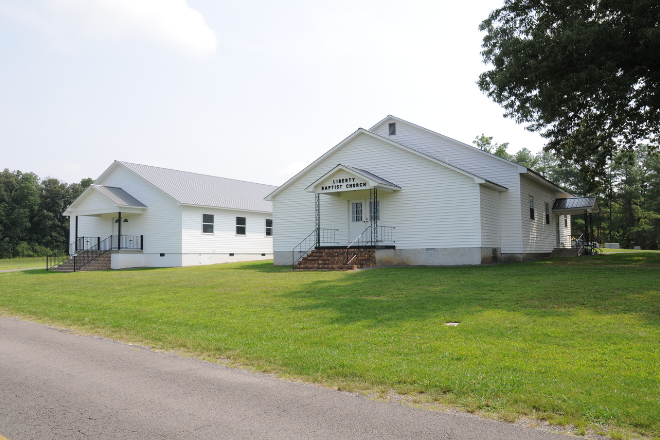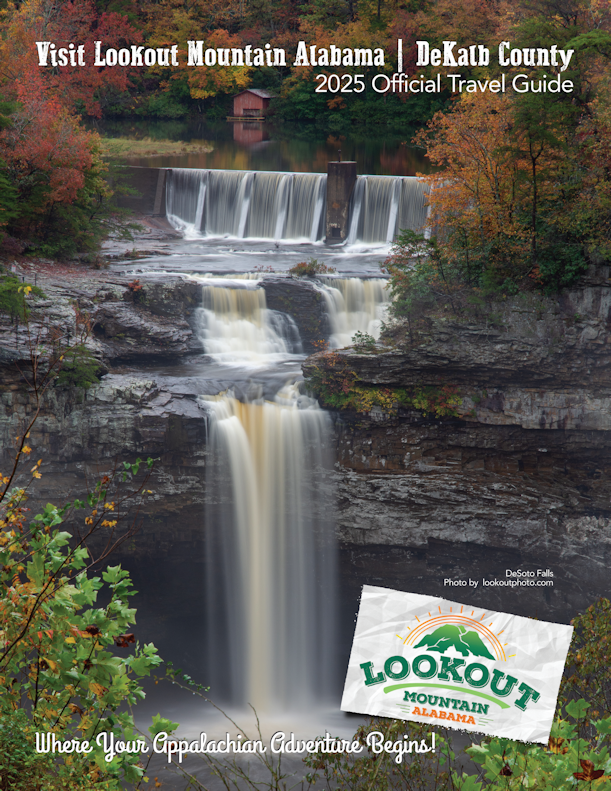The Hallelujah Trail: Historic Churches throughout DeKalb County
The Hallelujah Trail: Historic Churches throughout DeKalb County
By Kerry Scott
DeKalb County is known not only for its natural beauty but also for its rich history and strong Christian heritage. As you travel the charming towns and communities that dot the county, you’ll discover a tapestry of churches, many of which have stood for more than a century. These historic landmarks offer a glimpse into the past and an opportunity to appreciate their architectural beauty and spiritual significance. Welcome to The DeKalb County Hallelujah Trail, a captivating journey through 20 remarkable churches.
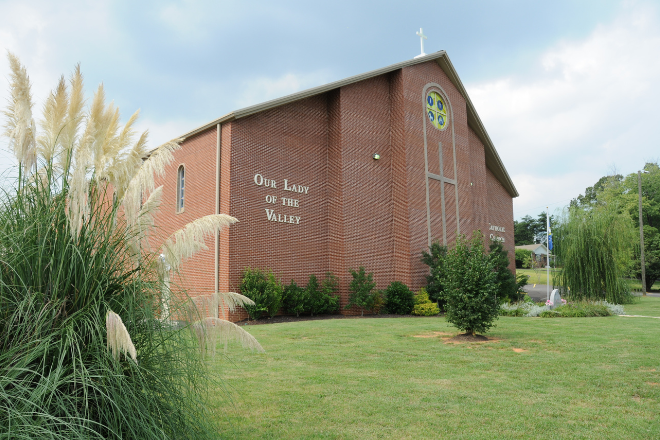
Our Lady of the Valley Catholic Church – 2910 Gault Ave. N., Fort Payne, AL 35967
The sole Catholic Church in DeKalb County, Our Lady of the Valley has a unique history. What began as a small group of families who gathered in private homes eventually led to the construction of a modest building in 1963, accommodating around 150 worshippers. Over time, the church experienced growth and underwent expansion. In 2002, the present-day church was established, offering a seating capacity for 500 individuals. The original church building has since been repurposed for administrative offices, preserving its legacy.
First Presbyterian Church of Fort Payne – 300 Grand Ave. N., Fort Payne, AL 35967
First Presbyterian Church of Fort Payne holds a special distinction as the oldest active church in the area. The influence of the Presbyterian denomination in the region dates back to 1839. Situated in the historic downtown district, the church’s current sanctuary was constructed in 1889 and remains a vibrant place of worship to this day.
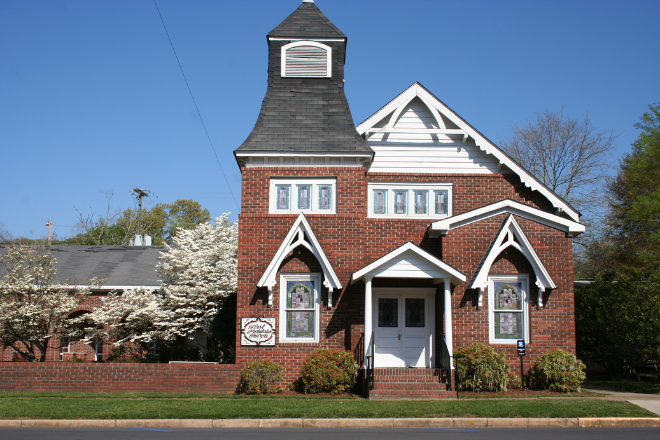
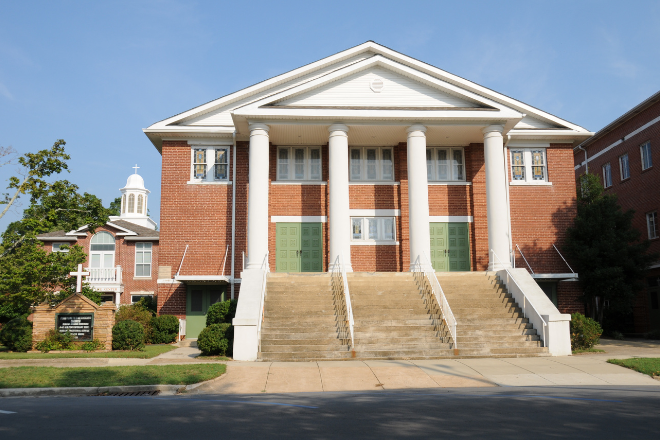
First Methodist Church of Fort Payne – 206 Grand Ave. N., Fort Payne, AL 35967
First Methodist Church’s origins can be traced to 1885, when the original church was established. The following year, a building was erected near the present location of the church. In 1921, the current church was constructed on the same site.
One notable feature of the church is a remarkable stained glass window that holds historical significance. In 1925, a group of Confederate soldiers donated this unique window, which proudly displays the inscription “W.N. Estes Camp, United Confederate Veterans.”
First Baptist Church – 106 Grand Ave. N., Fort Payne, AL 35967
The church was originally organized in 1885 and experienced growth and prosperity as it moved through various locations. In 1920, a new sanctuary was constructed at the current location, marking a significant milestone for the congregation. In 1941, an educational building was added to further support the church’s mission. However, in 1959, both the sanctuary and the educational building were demolished to make way for construction of the present sanctuary. This new sanctuary was completed in 1960, and an educational facility was added in 1966. In 2002, the church installed a Rieger-Kloss pipe organ, adding to the musical and spiritual experience of its worship services.
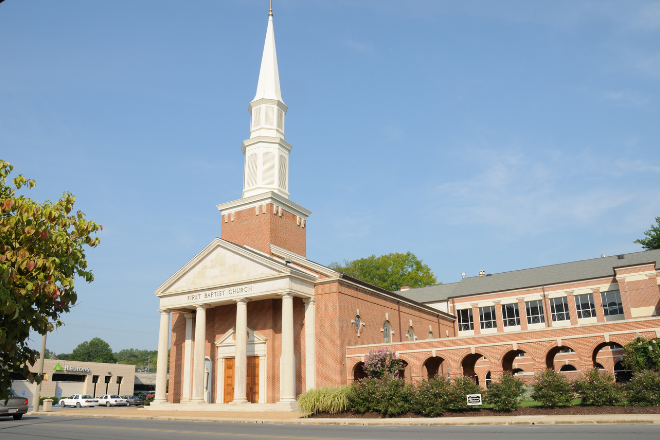
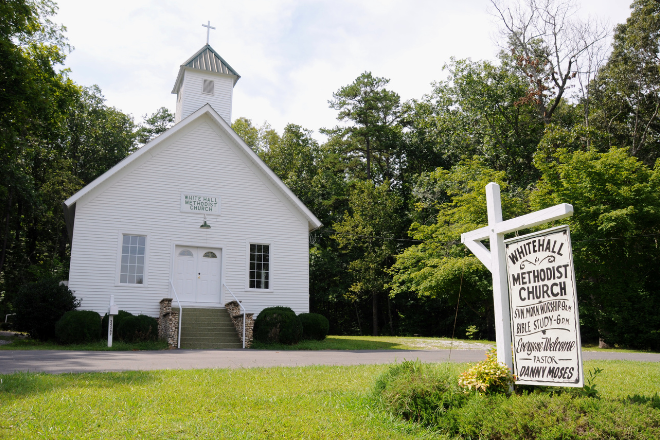
White Hall Methodist Church – 34387 US Hwy 11, Hammondville, AL 35989
Initially constructed as a Presbyterian church in 1888, Methodists purchased it in 1920. The church received its name from the generous contributions of John and Clara Keith White, who donated the land for the cemetery as early as 1835. This act of benevolence laid the foundation for the church’s establishment and enduring presence in the community.
Valley Head Methodist Church – 146 Church St., Valley Head, AL 35989
The church was established sometime between the 1830s and 1852, with the construction of a small wooden building near William Holleman’s farm. This farm was situated in the northern part of Fort Payne, close to the present-day Lower Sulfur Springs Cemetery. Originally known as Holleman’s Chapel, the Methodist Church was named in honor of William Holleman, a Methodist circuit rider who had played a significant role in the local community. The church operated under this name until 1871, when it was relocated to Valley Head and renamed Valley Head United Methodist Church. On Aug. 22, 1904, the entire church building was physically relocated from its original site to its current location in Valley Head. The relocation preserved the historic significance of the church while allowing it to continue serving the community.
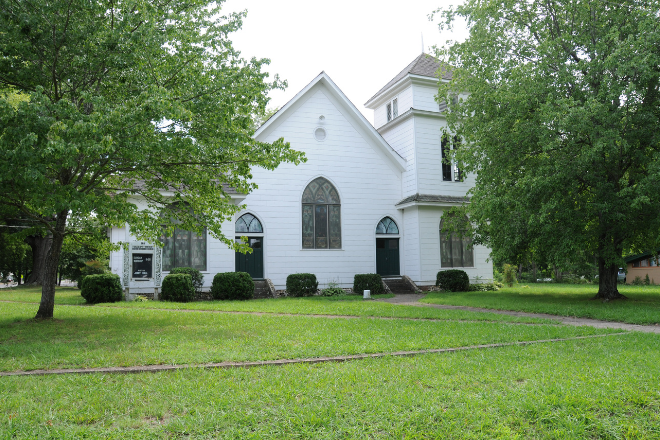
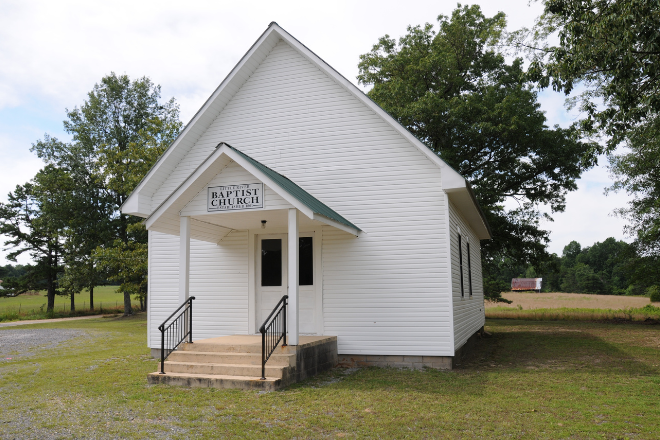
Little River Baptist Church – 1432 County Road 648, Mentone, AL 35984
Originally known as the Baptist Church of Christ, the church underwent a series of transformations before becoming the beloved Little River Church it is today. In 1861, land was generously provided for the church at its present location. A church building was constructed on the site, and it was subsequently named Little River Church. Unfortunately, the original structure was destroyed by fire. Undeterred by the setback, the resilient members of Little River Baptist Church came together and rebuilt their cherished place of worship in 1894.
One notable feature of Little River Baptist Church is its cemetery, which serves as the final resting place of Granny Dollar, a legendary figure whose memory lives on within the community.
Mentone Methodist Church – 415 Cutler Ave., Mentone, AL 35984
Mentone Methodist Church was built in the late 19th century and stands as a testament to the dedication and support of its founding members, Roscoe and Ethel Brown.
One notable feature that sets it apart is its impressive high steeple cross. The towering symbol serves as a visual landmark, representing the church’s steadfast devotion.
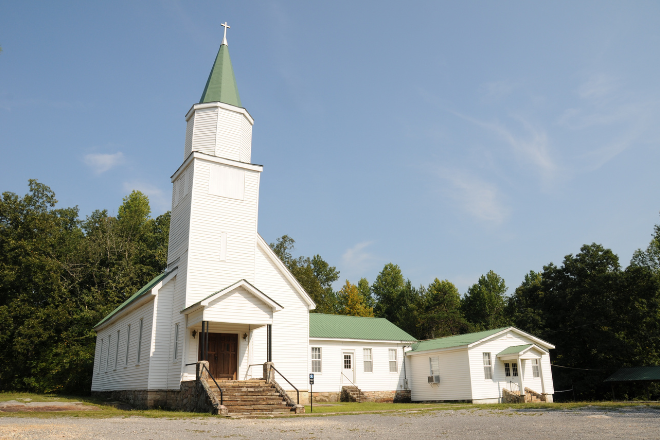
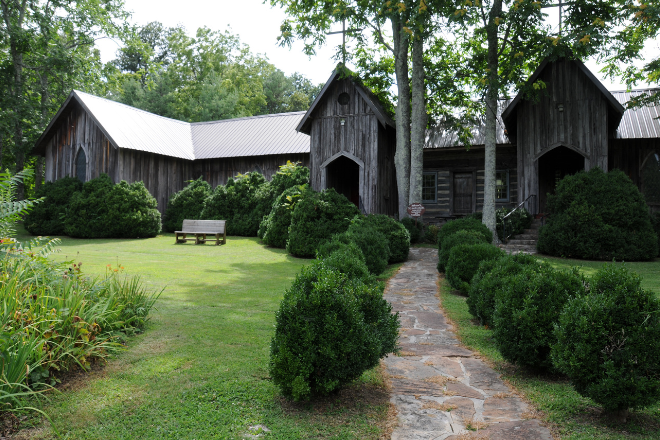
St. Joseph’s on-the-Mountain Episcopal Church – 21145 Scenic Hwy., Mentone, AL 35984
This historical landmark showcases the rich heritage of the Episcopal community in the area. The church holds within its walls a unique piece of history—an original log cabin dating back to 1870, lovingly preserved by its dedicated members. One of the church’s prized possessions is a hand-painted stained glass window, a true work of art that was crafted over a century ago in France.
Sallie Howard Memorial Baptist Church – 14 County Road 617, Mentone, AL 35984
Constructed in 1937 by Colonel Milford W. Howard, this church stands as a loving memorial to his late wife, Sallie. Colonel Howard’s deep affection for his wife is evident in every feature of the church’s design. Above the pulpit, a prominent beam proudly displays the poignant words from Sallie’s last letter: “God Has All Ways Been As Good To Me As I Would Let Him Be.” The church’s unique construction around a massive boulder serves as a powerful symbol of strength and stability.
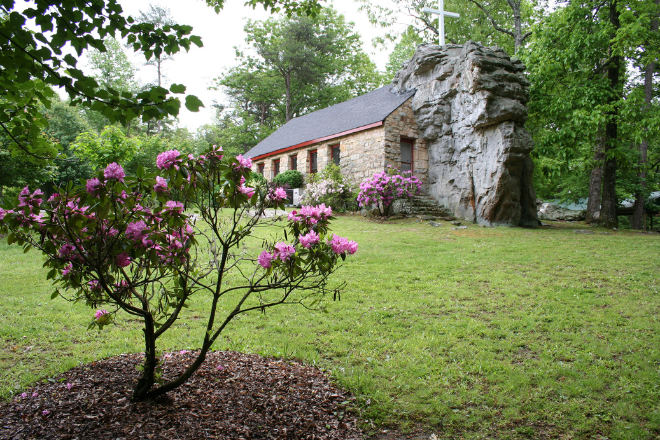
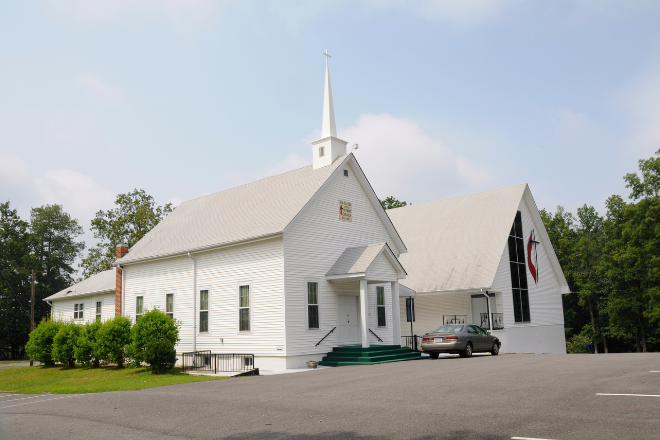
New Oregon Methodist Church – 1204 New Oregon Dr. NE, Fort Payne, AL 35967
Established in 1877 as the Oregon Methodist Church, it originally stood about a mile north of its present location. In the early days, services were conducted by a circuit rider, a traveling minister who visited once a month to lead worship. The current structure was built in 1888. In 1992 a new sanctuary was added, providing an enhanced space for worship and community gatherings.
Walker’s Chapel Methodist Church – 796 County Road 115, Fort Payne, AL 35967
While the church’s beginnings date back to 1842, the building that stands today was constructed in 1900. The church is named after Peter J. Walker, a prominent Methodist minister who played a significant role in the Dogtown area during the 1840s and 50s. The original Walker’s Chapel Methodist Church began as a log cabin, with simple construction and no glass windows. It later became a schoolhouse on Lookout Mountain.
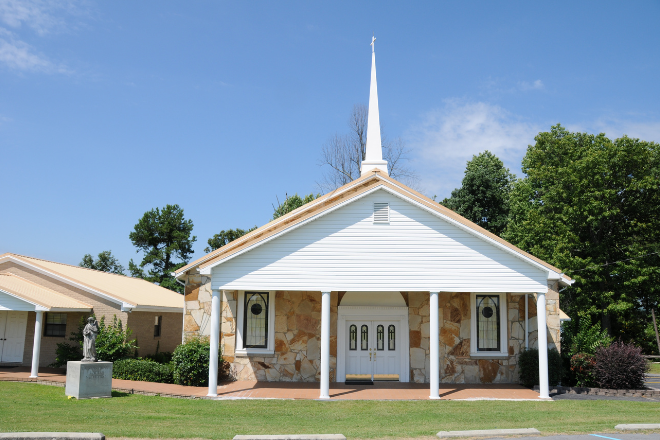
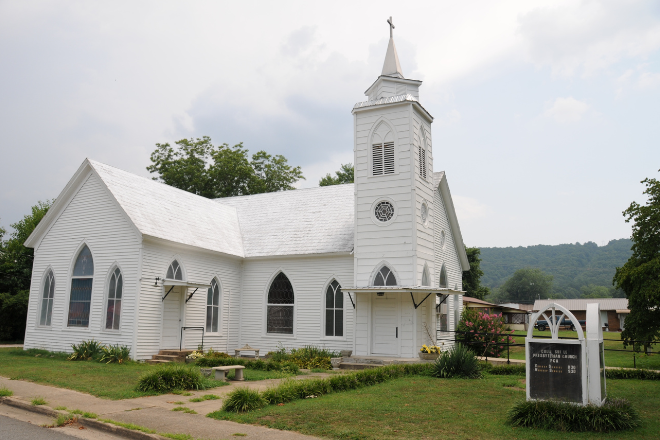
Collinsville Presbyterian Church – 79 S. Valley Ave., Collinsville, AL 35961
The church stood at the foot of Cochran Hill prior to its present location, which was constructed in 1908. Today it stands as a beautiful testament to the community’s faith and architectural heritage, with its Gothic style. Collinsville Presbyterian Church was added to the Alabama Register of Historic Places in 1976.
One notable aspect of the church is the presence of five memorial stained glass windows, which add to the beauty and significance of the interior space. These windows serve as lasting tributes to individuals or events that hold special meaning to the church and its congregation.
Collinsville Baptist Church – 4276 AL Hwy. 68, Collinsville, AL 35961
Established in 1837, Collinsville Baptist Church is the oldest Baptist Church in DeKalb County. The current building was erected on land donated by Mr. Alfred Collins in 1928. In 1987, Collinsville Baptist Church celebrated a significant milestone, as it reached its 150th birthday.
A historic marker was unveiled and dedicated on Oct. 8, 1996, on the church lawn. This marker draws attention to the multifaceted significance of the property, denoting the location of an Indian mound, an inn, and, of course, the church itself. This marker serves as a reminder of the rich heritage that Collinsville Baptist Church is a part of and highlights its place in the broader historical narrative of the area.
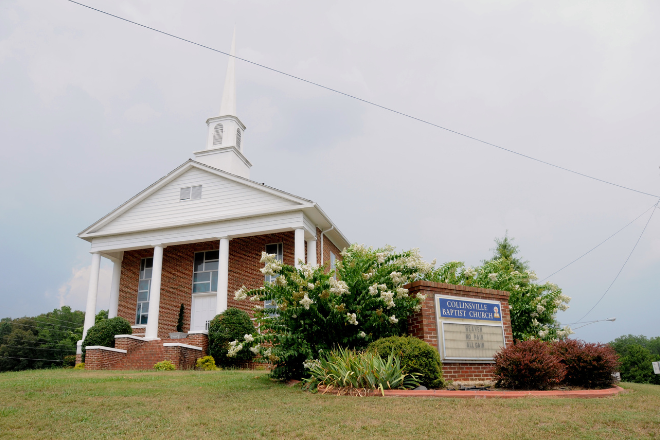
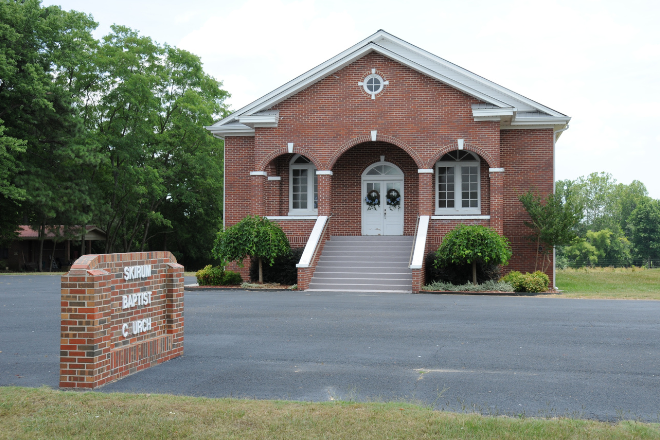
Skirum Baptist Church – 2074 County Road 46, Crossville, AL 35962
The church joyfully celebrated its centennial birthday in 2008, a significant milestone in its journey of faith and service to the community. The current church building was constructed in 1947, providing a new and welcoming space for the congregation to gather and worship. Adjacent to the current Skirum Methodist Church, the remnants of the original structure still serve as a reminder of the church’s roots and the journey it has undertaken. Skirum Baptist Church has been blessed with the leadership of Reverend Billy Smothers, who has faithfully served as pastor since 1963.
Fyffe Church of God – 778 Main St., Fyffe, AL 35971
The original structure of the Fyffe Church of God, built in 1953, remains an integral part of the current church building. Throughout the years, the church has undergone various remodeling and expansion projects to accommodate the growing needs of its congregation.
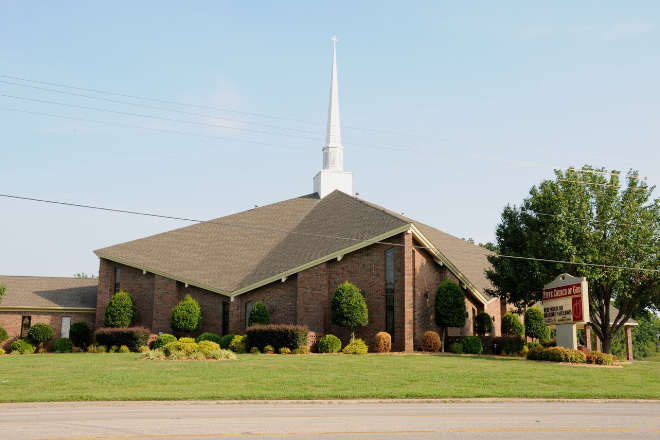
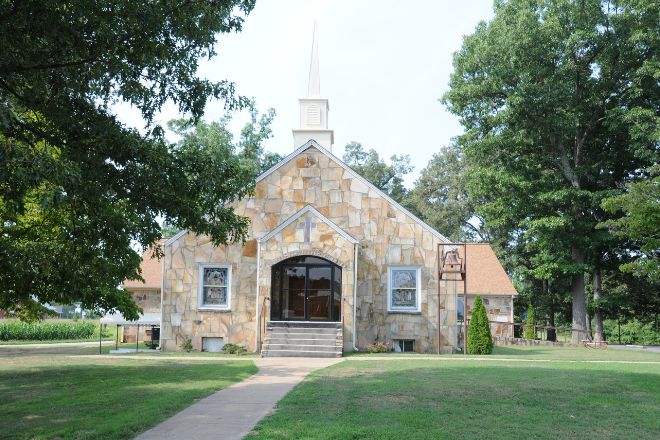
Robertson Chapel Methodist Church – 812 George Wallace Dr. E, Rainsville, AL 35986
Robertson Chapel Methodist Church has been a beacon of faith and community since its establishment in 1901. The current church building was erected in 1950 using exquisite Tennessee flagstone. In 2001, a fellowship hall was added, providing a gathering place for the congregation to come together and build relationships. In 2004, a steeple was added, gracing the church with a distinctive silhouette that stands tall and proud against the sky.
Chavies Baptist Church – 1113 County Road 555, Rainsville, AL 35986
The church’s journey began in 1903 in an old mill house situated on the banks of Town Creek. In 1908, the church received a generous donation of land, which became the foundation for the development of a more permanent place of worship. The second church structure was erected on this land in 1935, replacing the original church building. Unfortunately, the former church had suffered severe damage in a storm, necessitating the construction of a new facility.
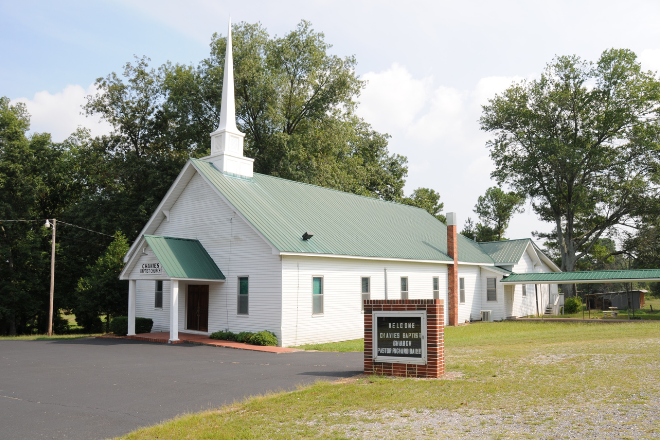
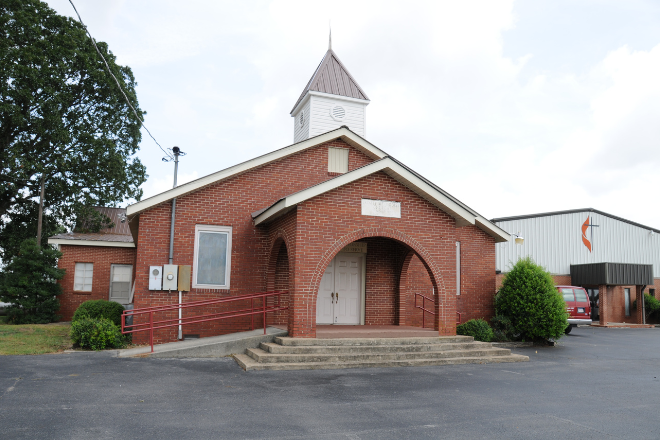
Trinity Methodist Church – 1257 Carissa Rd, Sylvania, AL 35988
The church’s original log building was completed in 1883 and served as a dual-purpose facility, functioning as both a church and a school. Unfortunately, this structure was destroyed by fire, earning it the nickname “burnt church.” In 1948, the congregation constructed the present-day brick building, which still stands today as a testament to faith and perseverance. Subsequent additions were made to the church in 1953, further enhancing its facilities and accommodating the growing needs of the community.
Liberty Baptist Church – 1500 Liberty Road, Henagar, AL 35978
Liberty Baptist Church has a longstanding history that dates back to its establishment in 1893. Throughout its existence, the church has been dedicated to preserving and promoting the tradition of sacred harp singing. Sacred harp singing is a form of a cappella vocal music that originated in the Southern United States and holds a significant place in the church’s worship practices. This unique musical style, characterized by its vibrant four-part harmonies and powerful acoustics, creates a captivating and spiritually uplifting experience. The church cherishes this tradition and continues to embrace it as an integral part of worship. The roots of sacred harp singing can be traced back to the publication of the original Sacred Harp tune book in 1844.
